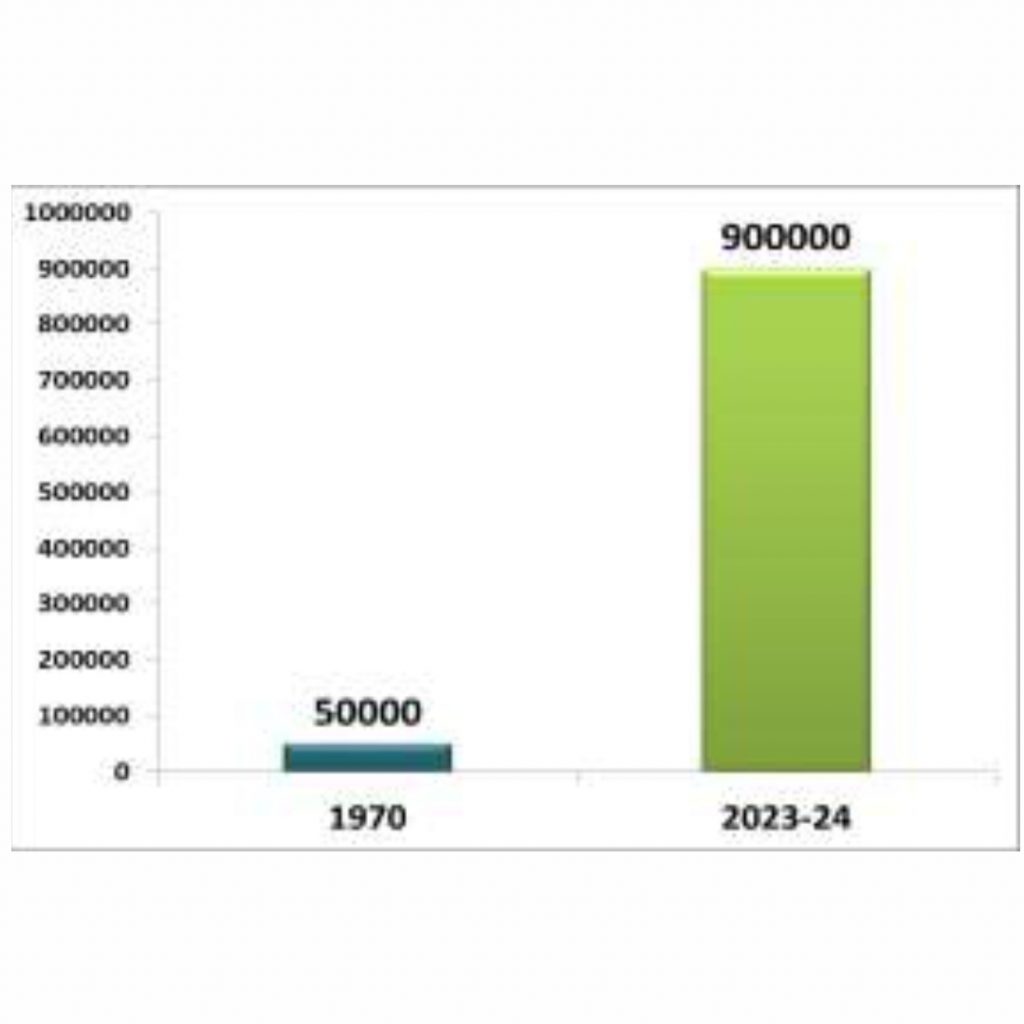Most of the farmers enter into farming and continue to handle the same for next three or four decades. Increasingly we notice that the younger generation move away from farming exploring greener pastures by spending more time in education and other job opportunities. This is likely to accelerate the labour shortage and succession.
This situation is forcing the existing set of farmers to adopt mechanisation in a big way. This has led to the use of tractors with implements, harvesters, transplanters and other modern technologies in order to save cost, improve efficiency and productivity.
Farmers have clearly identified the usage of various Horse Power of Tractors to suit their soil types, time availability, diesel consumption, implements to be used and this in turn has led to healthy growth of tractors in the past decades. The exhibit no.1 which compares the sales of new tractor in India proves this point.
Exhibit no.1 -Trend in Tractor Sales in India

Transplanters significantly reduce the labour required for planting rice seedlings. It reduces the work of 15 labours required for covering 2 acres per day. Machine will cover 6 to 8 acres per day. This not only saves manpower but also ensures more uniform planting, leading to better crop yields.
Once the crops are ready for harvesting – there are tasks involved like reaping, threshing, and cleaning the crop manually during earlier days. Harvester covers 1 acre in an hour.
By mechanising these tasks, combine harvesters reduce the need for manual labour during harvest season, which is often a bottleneck for farmers. This results in faster and more efficient harvesting, allowing farmers to maximise their productivity and minimise post-harvest losses. Exhibit 2 shows the sale of harvesters few decades ago and now.
Exhibit 2 –Estimated sale of Combined Harvesters

From land preparation to residue management, adopting a complete mechanisation approach can streamline the entire farming process.
Given the small and scattered nature of land holdings in India, there’s a growing market for mechanisation services. This trend is expected to continue driven by factors such as technological advancement & government support.
Today, we see sophisticated technologies such as temperature and moisture sensors, robots, GPS technology, drones are being used to enhance the productivity & profitability of farmers. Government has laid emphasis by providing financial assistance to farmers for purchase of different kind of farm equipments.
By embracing mechanisation, it is clearly seen that there seems to be a significant adoption in terms of mechanisation by the farmers. However, still there seems to be a lag with respect to international markets. Let’s see how the International markets have moved with respect to mechanisation in the subsequent editions.
Despite their modest formal education background, the farmers have managed to adopt mechanisation and continuing to contribute for the food security of the country. This very nature of rising above the challenges demonstrated by the farmers must be celebrated as a huge inspiration by each and every Indian.




